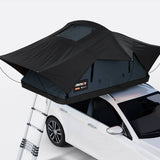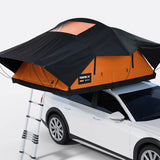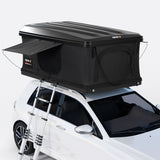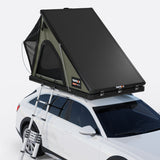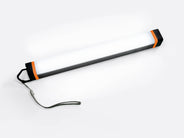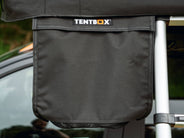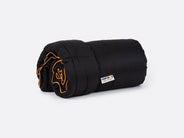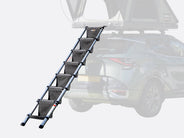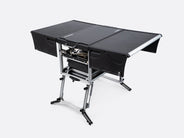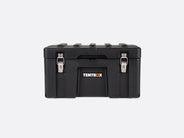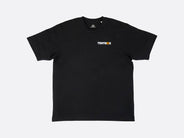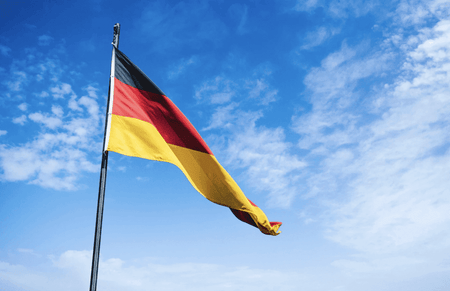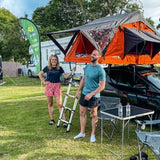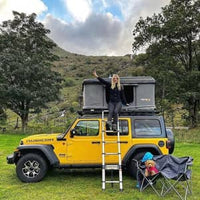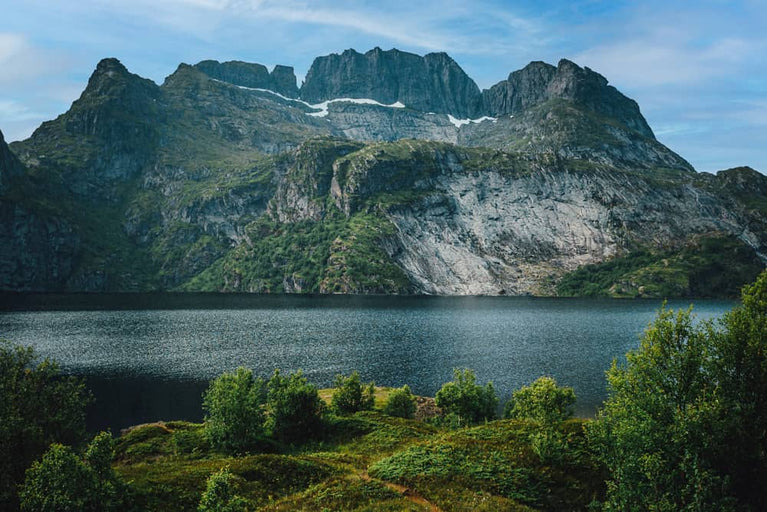Get Inspired For A German Adventure With TentBox
We caught up with friend of the brand, Stefan, to discuss his latest travels and tips. If you’re thinking of exploring Germany, take a look at this article first!
What TentBox do you have?
I have had the TentBox Classic since May 2020. I have bought it for our record label and artist collective Modularfield to be closer to the artists if needed and flexible when being in charge at concerts, events or conferences.
Based in Cologne, we manage a roster of nearly 30 artists coming from places like Breslau (An On Bast), Hamburg (Surkid) or Munich (Lucid Grain).
Why did you choose TentBox?
I have liked the idea of having a tent with me since being a child. Born and raised in East Germany my family did not have a car or a tent. I swore to myself to have both when I am a grown-up. It took me a while to get it and it looked different from the things I saw as a child. But I still like that feeling of freedom to drive where I want and then go home within minutes.
I have worked as a business consultant for the last 20 years. Mainly with a focus on strategy, software and start-ups. Having started several businesses myself, I have a place in my heart for newcomers like TentBox. A new business needs good friends!
What adventures have you been on with TentBox?
The season this year started with a few small trips to the area, where I spend my youth. The middle of Germany, including the area of Halle, Leipzig, the Harz mountains or the Saale/Unstrut region are not really known as tourist hotspots.
Every time I have the chance to travel through that area, I discover new places, places that have changed fundamentally or start to become really interesting. To me this is Tentbox country because you can stay at a place for 2-3 days, do your discoveries and then go to the next stop without overthinking. Below are some examples of where you can have a good time while travelling through Mitteldeutschland and exploring this beautiful area.
Grillenberg
This year’s tour started just behind the village Grillenberg, which is at the doorsteps to the Harz mountains.
Directly placed into the hilly area is a large outdoor pool, a small parking site, a kiosk and a lot of options for open-air activities. This includes table tennis, volleyball, chess, or a barbecue station.
The place is run by volunteers, who also look after everything on site. In the evening there is time for a chat with the locals or other outdoor enthusiasts. The area is also ideal for biking or hiking.
Every 10 km or so there are mediaeval villages, old churches or even castles to discover. A must see for romantics – or those who want to become it, is the Rosarium in Sangerhausen. It is the world’s largest collection of roses with more than 8.600 species on display.
The area includes a large park, some fishponds, restaurants, and shops. If you are lucky, there will be an open-air concert. Others might prefer the adventure mine (Erlebnisbergwerk) near the small village of Wettelrode.
This mine was abandoned in the 1990’s and is a museum now. The mining tower is still working, and you can go several hundred meters deep. All the described destinations have tent-box compliant parking spaces, with the option to stay for 1-2 days.
Geiseltalsee
The next stop and always worth the journey is the area around Geiseltalsee. It is Germany’s biggest, artificial lake and now covering what was a former opencast lignite mine. Beside some nice spots at the newly built marinas Mücheln and Braunsbedra there is a diving centre in the small village Frankleben. Which also has a castle to visit.
My tip, if you want to close the TentBox for a while, take one of the houseboats, which are available for rent. They are not too spacious but well planned and offer room for 4 people at least.
While having that safe harbour it is highly recommended to visit the Waldelefant and the Urpferd at Pfännerhall. The former central workshop for the mine is today a large, archaeological art-deco style, museum. If you are hungry afterwards and like fresh fish, the next stop is at Forellenanlage Schmidt, in Mücheln Which is a family owned business close to the baroque castle of St. Ulrich. On the way back to the house-boat or your tentbox you can visit the local vineyard or go to the beach, sunbathing and swimming.
Unstrut
Not far from Mücheln, our previous stop is the small river Unstrut. A biotope known for its mixture between unique history, nature and a small but excellent area for growing wine. Karsdorf is a good stop to park the car and set-up everything.
My tip would be to stay here for a while. Especially when you have an inflatable kayak, folding bikes or a swimsuit with you. The 190 km long Unstrutradweg, passes the camp spot directly at the river.
You have various highlights in both directions. Roughly 20 km by bike downstream is the small city of Freyburg. The way is encompassed with dozens of vineyards, which people farm here as their secondary occupation. My personal highlight is the small public pool for kids and grown-up’s -just before the town centre.
In the same direction, but a totally different experience is the kayak tour to the small town Laucha which is 10 km away from Karsdorf. At the middle of that route is a weir, that must be passed. At the 2nd weir is already the beer-garden Schiffer Clause. Total journey time by kayak is 3 hours. Return is possible via train (Unistrut Bahn, every hour) or by taxi, which can be called at the counter.
Nebra
The next excursion is again by bike and brings you roughly 15km away from the camp. If you follow the river upstream you come to the town of Nebra, which is today known for the discovery of the Himmelsscheibe (literally: sky screen). A display of the sky as it was perceived 3600 years ago by local priests and famers is the heart of that exhibition that also tells the unbelievable story about its discovery.
The connection between all those places mentioned before is Straße der Romanik, a historical route to mediaeval buildings, places and towns right in the middle of Germany. One stop not to miss on this route is the village Seeburg in the Mansfelder Land. Maybe half an hour drive from the places at the Unstrut mentioned earlier. There is a cycling path around the lake Süßer See (ca. 20 km) and there is the vineyard at Rolsdorfer Mühle. Both places are Tentbox-tested and offer nice spots to stay for a night. It’s an area that breathes history, offers good quality wine and food and the quietness that is required sometimes.
What are your future plans with your TentBox?
Spreewald, the magic forest between Berlin and Dresden is on the list for ‘21, as well as a visit to Dessau at the Elbe.
What are your TentBox travel tips?
Wherever you go, there you are – the biggest challenge are unrealistic expectations about your trips. If you like it comfy and extravagant, get a campervan.
Good preparation is everything – try your set-up in walking distance from home before going on the road, be open for changes.
Everyone started small – recreation comes with routines also on the road. Start with a weekend abroad before planning bigger tours. Understand what a good place to stay really requires.
Bring the essentials:
Thermos flask, flashlight, folding boxes, sleeping bag, clothespins, and a small carpet to be placed under the ladder of the Tentbox will do you well!
